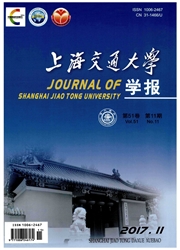

 中文摘要:
中文摘要:
采用交流钨极惰性气体保护电弧脉动送丝焊接方法,通过9组不同脉动送丝工艺参数的对比试验研究了焊接过程中脉动送丝频率以及抽丝距离对焊接气孔去除效果的影响规律,并检测了焊缝的质量和横截面气孔率.结果表明:在一定的焊接参数范围内,随着脉动送丝频率增加,焊缝横截面的气孔率先降低而后逐渐趋于稳定,气孔的分布逐渐向焊缝边缘靠近;随着抽丝距离增加,焊缝横截面的气孔率先降低而后升高,气孔直径的最大值明显增大;当脉动送丝频率为20 Hz,抽丝距离为2.0mm时,可以获得最佳的气孔去除效果,且焊缝表面成形良好.
 英文摘要:
英文摘要:
By using the pulsed wire feeding alternating current gas tungsten arc welding process, the influence of different pulse frequency and drawing-back distance on the removal efficiency of the porosity was studied in comparison experiments of 9 groups of different pulsed wire feeding parameters. The RT detection and statistical analysis of porosity of the weld cross sections were conducted. It is concluded that with the increase of pulsed wire feeding frequency, the porosity first decreases and then gradually stabilizes. The distribution of the porosity is getting closer to the edge of the weld. With the increase of the drawingback distance, the porosity first decreases and then increases, and the maximum pore diameter increases obviously. When the pulse frequency is 20 Hz and the drawing-back distance is 2.0 mm, the best results of pores removal can be obtained with the well formed weld surface.
 同期刊论文项目
同期刊论文项目
 同项目期刊论文
同项目期刊论文
 期刊信息
期刊信息
